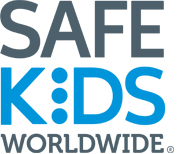You are here
Search
Time to Move to the Next Type of Car Seat?
- Don’t be in a rush. Use your current car seat until your child reaches the maximum weight or height limit listed on the label.
Despite progress over the years, there is one aspect of car seat safety that has seen no progress: top tether use. Tethers are used with forward-facing car seats that have a harness.
Safe Kids Worldwide and Chevrolet team up for Take Time to Tether public awareness campaign [Infographic]
Washington, D.C. – New research shows that more than half of forward-facing car seats are not used properly because of one misunderstood but essential step in installation: attaching the top tether. In fact, in a 2016 study of those who came to car seat checkup events, 64 percent of forward-facing car seats with harnesses were not attached using the tether.
For 20 years, Safe Kids Worldwide, General Motors and Chevrolet have partnered to protect children in and around cars.
Our new infographic shows how the top tether makes a difference during a car crash. The infographic explains what a tether is, why it is important and how to use it properly to keep kids safe while in the car.
In our latest Gary on the Street video, Gary talks to parents about an often misunderstood part of the car seat: the top tether.
Los niños hispanos tienen pocas probabilidades de estar bien sujetos cuando viajan en automóviles
This blog was written by Tori Lawson, SKW summer intern
Although I’m sure you’ll probably never get asked the following question, I want you to be prepared in the rare event that you do. If anyone ever asks if you’ve heard of an intern who returned to the very same internship six years later, tell them yes, and that her name is Tori Lawson.
In a week’s time in early August, eight people died in car crashes on Vermont roads. Seven of them were not wearing a seat belt that could have saved their lives. These tragedies have inspired Vermont Governor Phil Scott to reconsider his position against a new law that would allow for primary enforcement of seatbelt use. Once Gov.
Are you a California parent? If you are, please join us.
